When you were in school, do you remember the assignments where you had to summarize a reading passage into one short sentence or thought? Now harness that skill of finding the central message when you are talking with your child.
Does your child ever go on a long, winding story or diatribe full of complaints and frustrations? What happens if you immediately offer solutions to their problems they are lamenting about? How does that go?
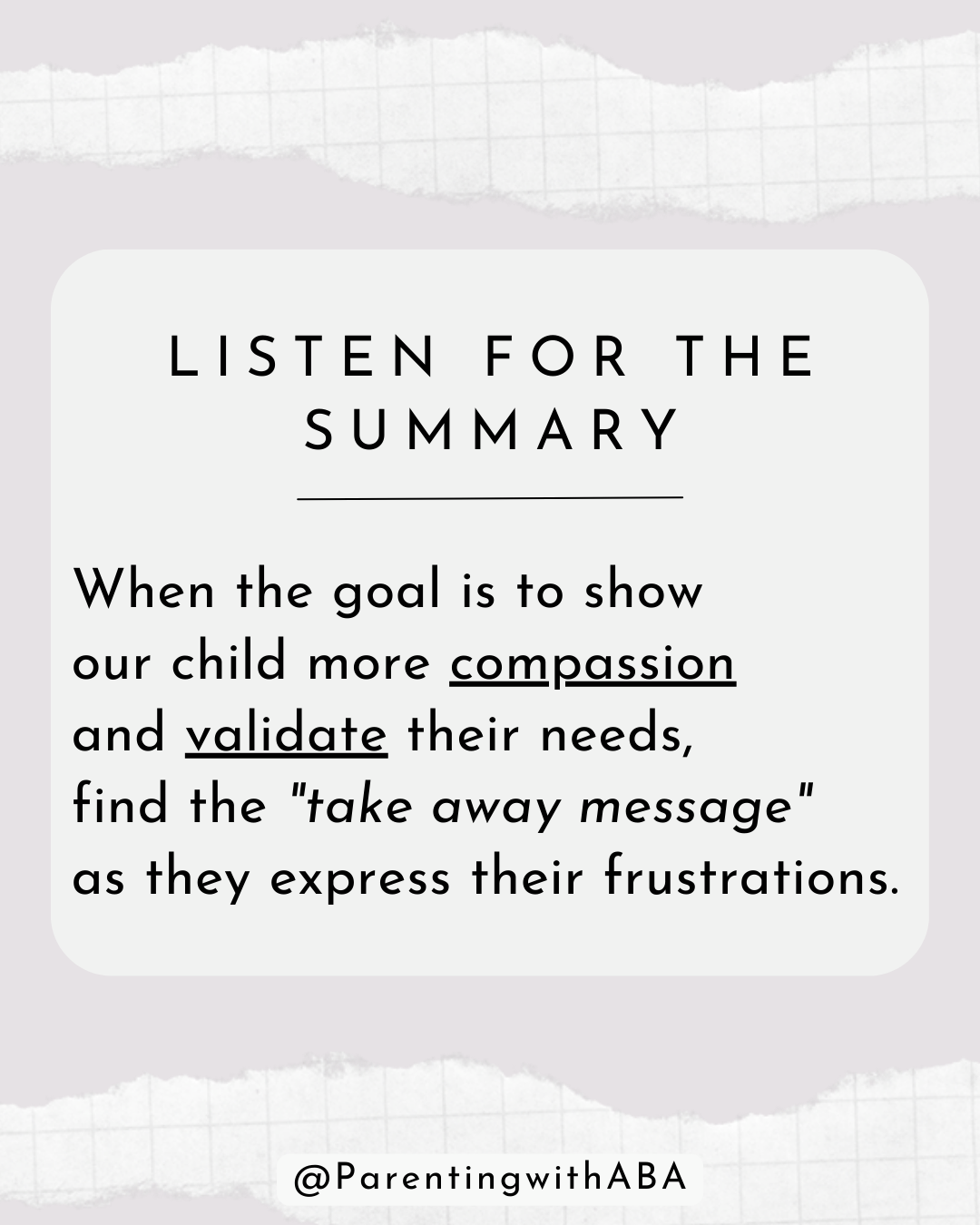
When you are frustrated with a situation, who do you like to talk to about it? Do you pick up the phone and call the friend who will jump in and fix everything for you? Or do you call the friend who will listen and offer a few encouraging words?
Usually, we just want to be heard, to be validated, and to feel seen in a time when we are upset or frustrated.
So why then do we as parents immediately jump into problem-solving mode when our kid is feeling frustrated?
My best guess is that we want to fix things for them out of an abundance of love. It’s hard to see your child hurting in any way and your reaction is to dive and make it better with our (overly worded) ideas to make things better!
But is that what our kids want or need at that moment when they are complaining or are upset about something? Often our rational for how things aren’t as bad as they seem or how they will get better if we do something to fix the situation misses truly acknowledging what they are trying to tell us.
Try this instead: listen for the summary. Just like that old grade school assignment- find the one-liner that sums out the whole rambling thing you just listened to.
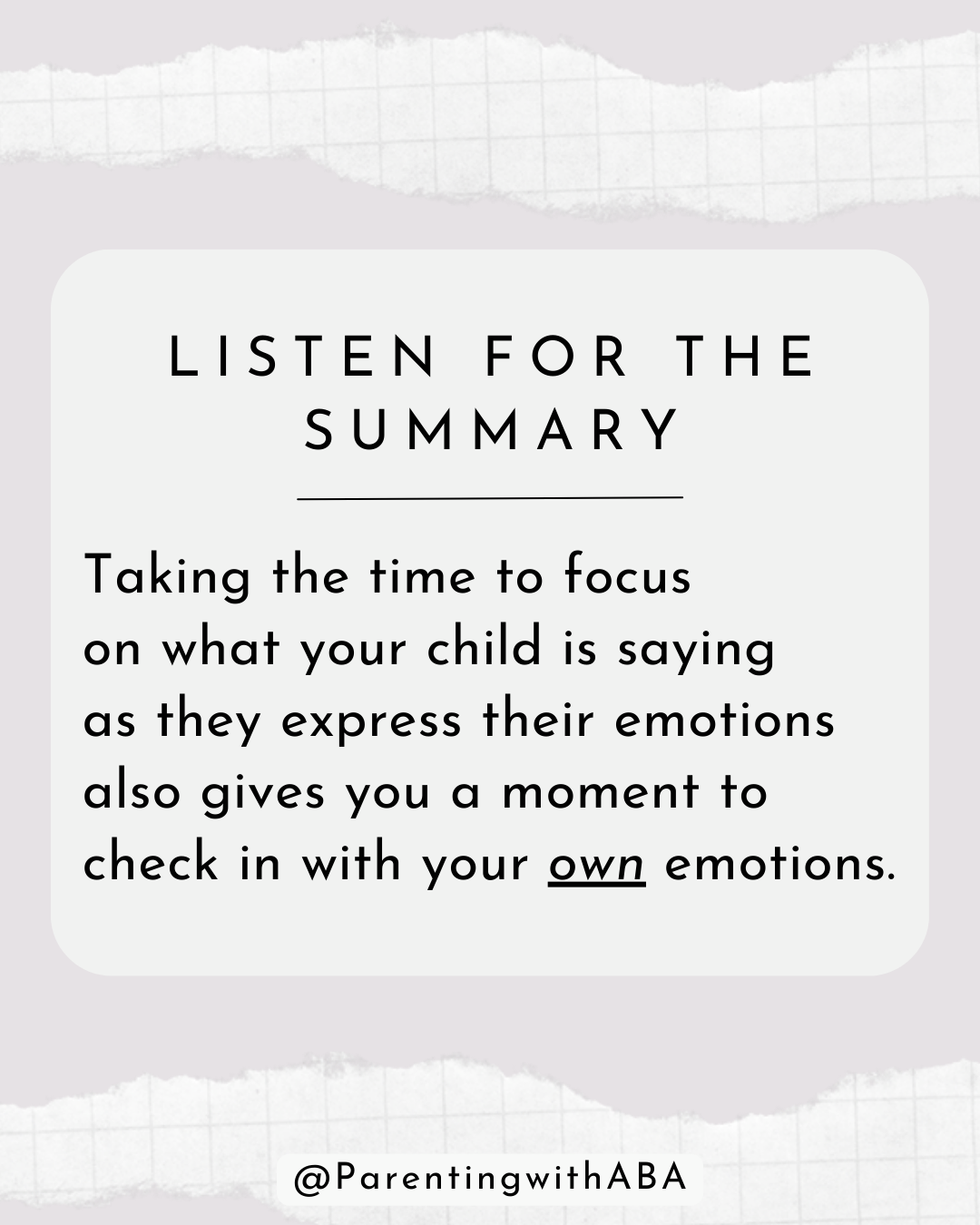
Listening in this way helps you to stay focused on what your child is saying instead of letting your brain run off down the road to solutions before your child is ready for that.
Listening for the summary helps to focus on your child and manage your OWN emotions – which may include irritation at the complaining when you work so hard to teach your child to be grateful or frustration that this is how these precious moments are being spent right now when you have a million other things to do. (I totally get it!) But take a deep breath and work to coregulate with your child by listening for the summary.
Listen for the summary. Then try saying your summary sentence to your child in a compassionate way.
- “It sounds like you are saying, ……”
- “ I hear you. ____ is really frustrating you right now.”
- “I understand. You are telling me____.”
Then if you are still just wanting to fix things, offer it as an option.
- “Do you want me to help you fix this?”
- “Do you want to brainstorm solutions together?”
- “Tell me if you want my help or advice. I’m always ready.”
Listening for the summary offers a safe place for your child to express themselves and feel seen and heard. That’s showing your child compassion. By doing so, you will be helping them to manage those big emotions and teaching them to come to you when they need help.
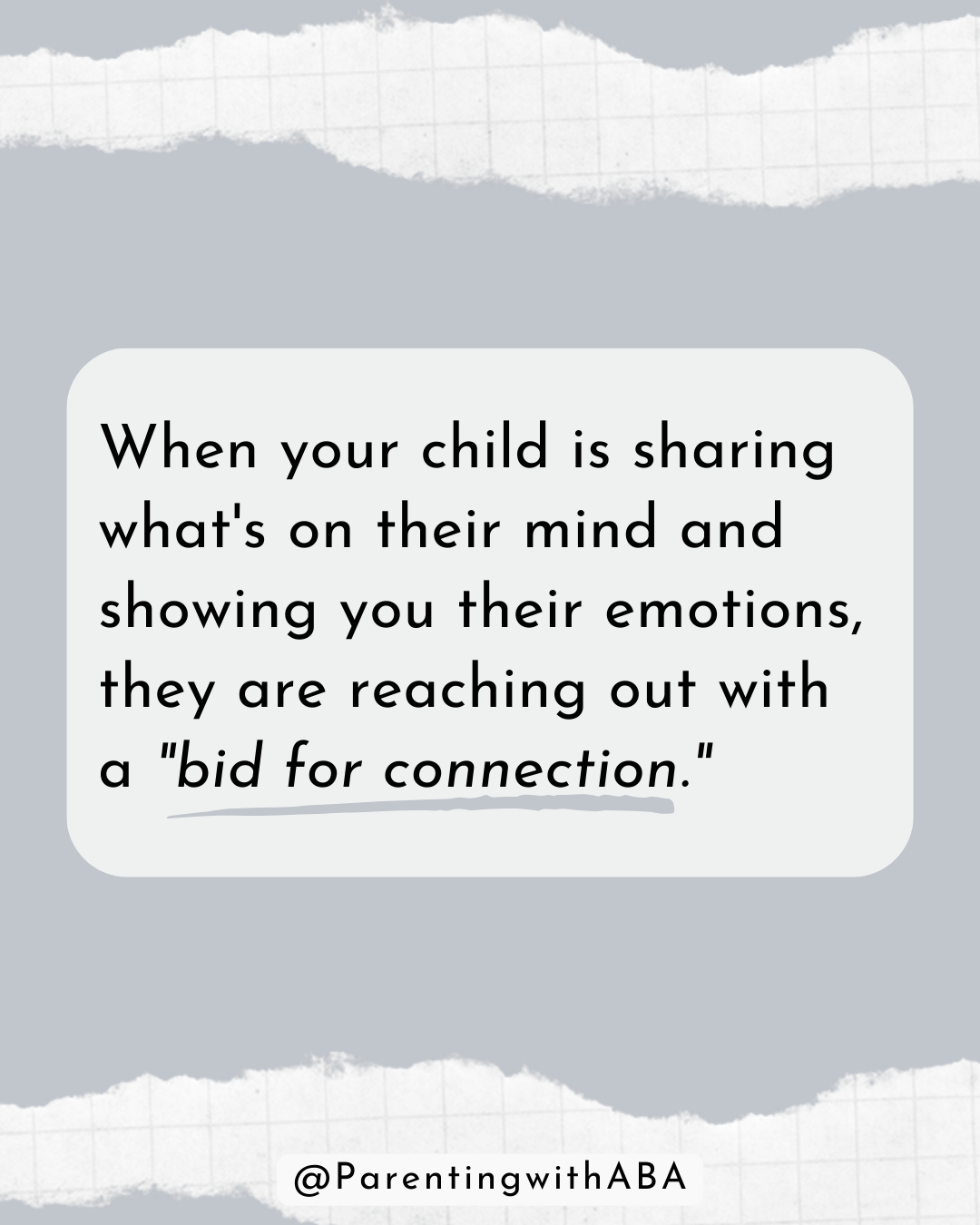
Humans long for connection. The Gottman Institute would call this a bid for connection. Your child is sharing with you- reaching out for connection. How are you going to respond? By going into fix-it mode before fully listening and taking the time to connect? – Or by responding to that bid for connection with compassion by listening intently?
Listening for the summary helps our brains to stay on track and remember what to do at that moment when emotions can run high. Telling your child that summary and asking if you’re correct is a way to turn towards that bid for connection.
If you are still with me and think your child is too young or lacks the verbal skills to talk to you- it’s the same idea with younger children. When they are reaching for something, making any sort of noises or utterances, making fussing or unhappy sounds, what do you do? You pay attention to their method of communication and do your best to identify what they want in that moment. You can use trial and error by showing them your idea(s) of what they might be wanting to see if a presented option seems to be what they have in mind. Otherwise, go with what you think best meets their need and try it out. Tell them the summary, “Do you want ….?” Or “I think you need ….” It’s the same idea, just presented in a different way.
When your child communicates with you in their own way, respond with compassion. See it as a bid for connection and focus on listening, not problem-solving. Listening for the summary is one way to help make showing compassion by simply listening easier for us as parents.
It’s hard to know what parenting advice like “Listen to your kids,” or “Be a more compassionate parent,” actually means. Listening for the summary is something we can DO to practice these complex ideas.
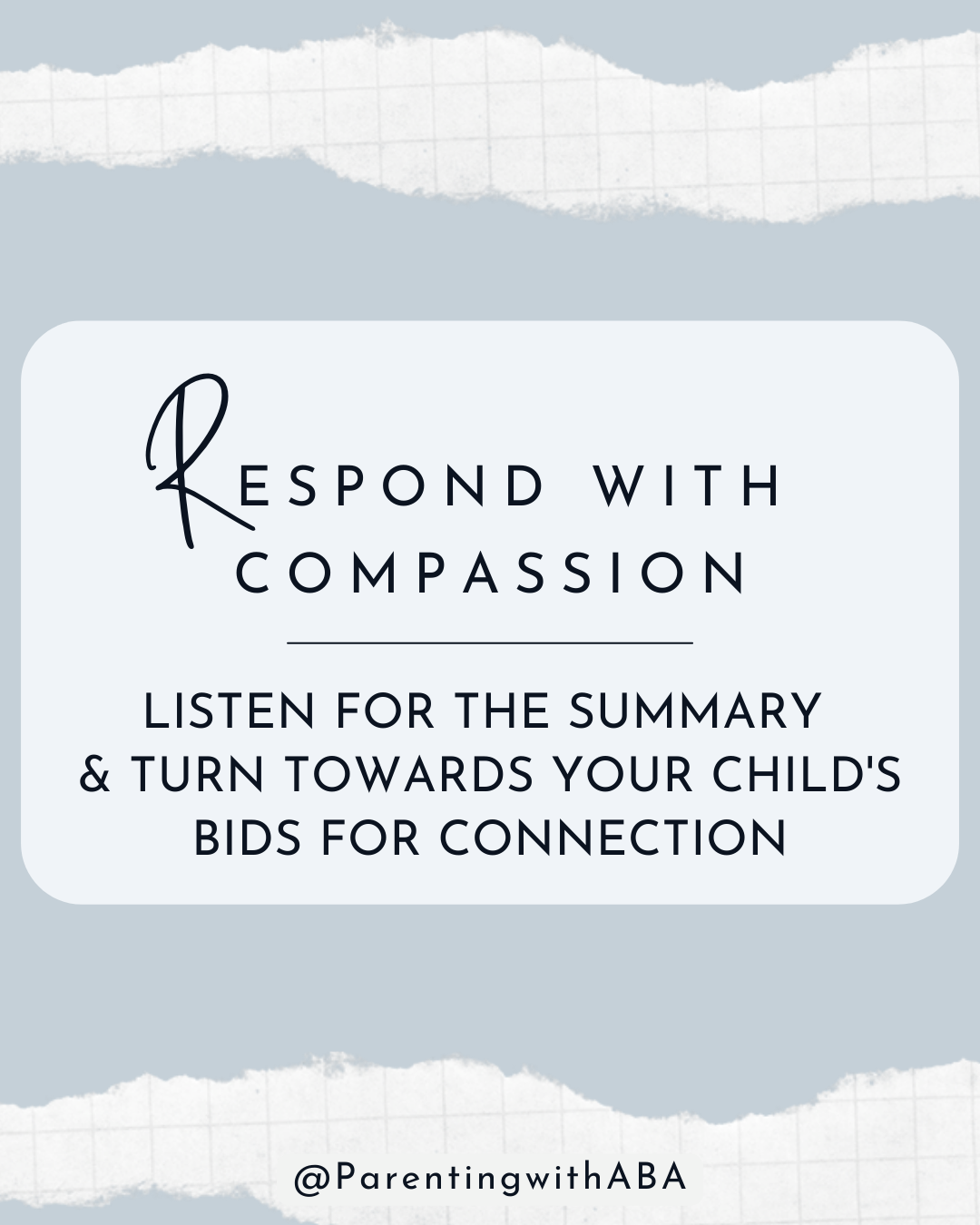
Try it this weekend and let me know how it goes!
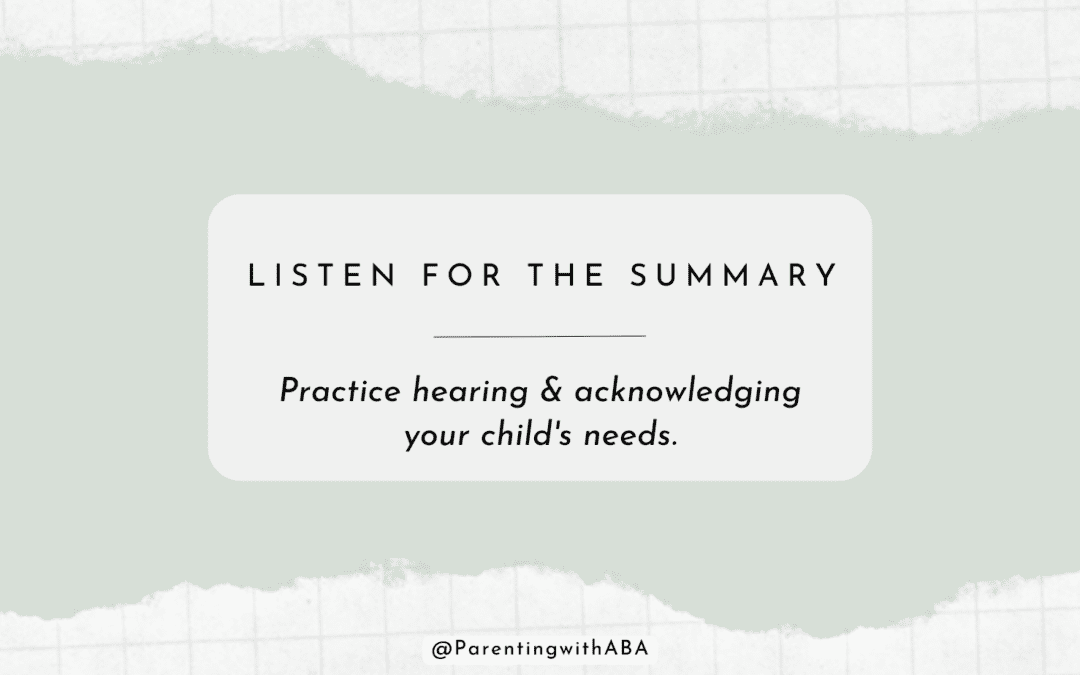
Recent Comments